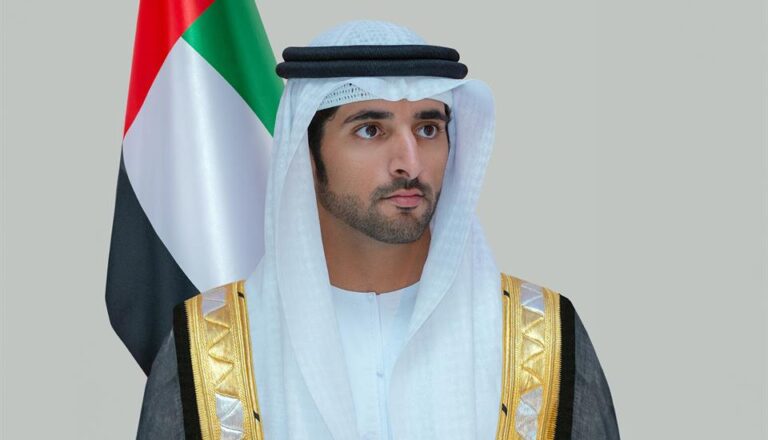His Highness: The project reflects Mohammed bin Rashid’s vision to raise the emirate’s profile as a global cultural destination
– Project aims to protect architecture that holds significant historical relevance and tells the story of Dubai’s past
– Second phase focuses on the preservation of 35 areas, sites, and buildings dating from the 1960s to the 1990s
– First phase covered 17 archaeological sites, 14 historical areas, and 741 buildings from Dubai’s earlier history
Crown Prince: “By protecting our heritage architecture, we seek to promote a deeper understanding among citizens, residents and visitors of what has shaped the emirate into thethriving metropolis it is today”
His Highness Sheikh Hamdan bin Mohammed bin Rashid Al Maktoum, Crown Prince of Dubai and Chairman of The Executive Council of Dubai, has approved the second phase of the project dedicated to preserving Dubai’s heritage architecture.
Part of a larger initiative aimed at protecting the emirate’s cultural and architectural heritage, and maintaining its rich identity, the project aims to safeguard areas, sites and buildings, which hold significant historical relevance and tell the story of Dubai’s past. The sites and buildings covered by this project serve as symbols of the emirate’s journey through the years.
This second phase focuses on the preservation of 35 areas, sites, and buildings dating from the 1960s to the 1990s, following the successful completion of the first phase, which covered buildings from Dubai’s earlier history.
Global destination
HH Sheikh Hamdan bin Mohammed said that the project reflects the vision of His Highness Sheikh Mohammed bin Rashid Al Maktoum, Vice President and Prime Minister of the UAE and Ruler of Dubai, to raise the emirate’s profile as a global cultural destination, and preserve its unique national character. The emirate’s heritage is an integral aspect of its identity that connects the community to its history and its roots.
By protecting its heritage architecture, Dubai seeks to promote a deeper understanding among citizens, residents and visitors of what has shaped the emirate into the thriving global metropolis it is today, His Highness said.
Sheikh Hamdan further said that the preservation of heritage areas in Dubai is an ongoing endeavour aimed at preserving the cultural authenticity of areas across the emirate. The project aims to foster cultural continuity, highlighting the enduring relationship between the people and their environment. It also showcases Dubai’s historical interactions with the rest of the world as well as the influences that have shaped the emirate and the impact it has exerted globally.
Architectural treasures
The second phase of the project features the restoration of 35 heritage sites and buildings, including Dubai’s old neighborhoods and buildings, which His Highness described as an “open museum of human heritage.” “We have a responsibility to celebrate our history and protect our architectural treasures for future generations. The heritage areas covered by the project hold the memory of decades of progress and symbolise the dawn of Dubai’s renaissance. Located in the heart of modern Dubai, these sites bridge the past with the city’s future aspirations. Dubai invites the world to witness its past, present, and the future, all together in one place,” His Highness added.
Sheikh Hamdan issued directives to enhance the appeal of both historical areas and modern architectural landmarks to attract more visitors. These efforts reflect a strong commitment to strengthening national identity as well as raising Dubai’s stature on the economic, cultural and tourism map.
The second phase of the project is set to restore an additional 35 heritage sites and buildings, bringing the total number of sites covered by both phases to 807. The initial phase covered 17 archaeological sites, 14 historical areas, and 741 buildings.
Preserving historical landmarks
His Excellency Dawoud Al Hajri, Director General of Dubai Municipality, said that the Municipality is committed to preserving historical landmarks and heritage sites in Dubai. He noted that the sites and buildings included in the second phase of the project represent a significant era in Dubai’s history. The preservation efforts not only honour the historical significance of these sites but also aim to share this rich heritage with future generations.
He further mentioned that the second phase of the project encompasses the restoration of 35 sites and buildings dating from the 1960s to the 1990s. These structures reflect Dubai’s more recent architectural history and narrate the story of the historical, cultural, social, and economic transformations that Dubai has experienced. This phase highlights the profound impact of the late Sheikh Rashid bin Saeed Al Maktoum’s vision, which has significantly shaped the city’s rapid development and modernisation during that period.
The 35 sites and buildings covered by the second phase of the project include: Clock Tower, Rashid Tower, Dubai Petroleum Building, Terminal 1 at Dubai International Airport, Dubai Municipality Main Building, Dubai Television Building, Sheikh Rashid bin Saeed Palace – Za’abeel, Hospitality Palace, Sheikh Rashid bin Saeed Palace – Hatta, Sheikh Rashid bin Saeed School – Hatta, Za’abeel Secondary School, Al Ras Library, Dubai Land Department Building, Fish Roundabout, Dubai Courts Building, Diwan Building, Naif Police Station, the Flame Monument, Emirates Post Building – Al Karama, the water tank at Al Khazzan Park, Safa Park Building, Al Nasr Leisureland, Jumeirah Zoo, Emirates Golf Club, Dubai Creek Golf Club, Jumeirah Mosque, Rashidiya Grand Mosque, Al Fahidi Mosque, Health Authority Mosque, Omar Bin Haider Mosque, Al Maktoum Hospital, Dubai Hospital, Baraha Hospital, Rashid Hospital, and Latifa Hospital (Al Wasl).
In the first phase of the project, Dubai Municipality focused on preserving buildings from Dubai’s earlier historical periods. This phase aimed to “document and protect” these structures, ensuring their preservation for future generations. Buildings, sites and areas covered by this phase included the Al Shindagha Heritage District, the Naif area, and Al Fahidi Historical Neighbourhood, among others.
Emirates 24|7



